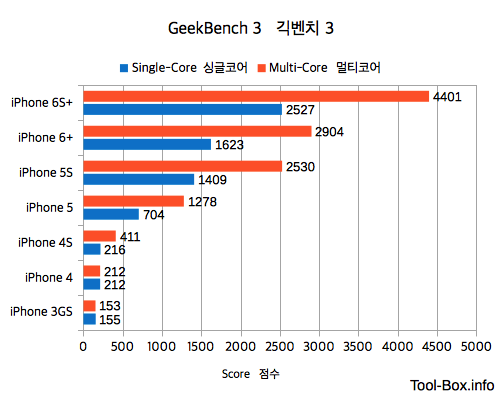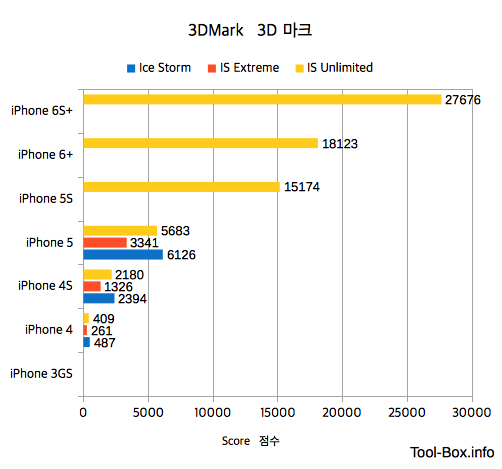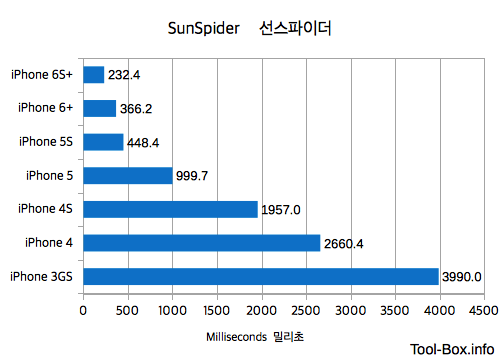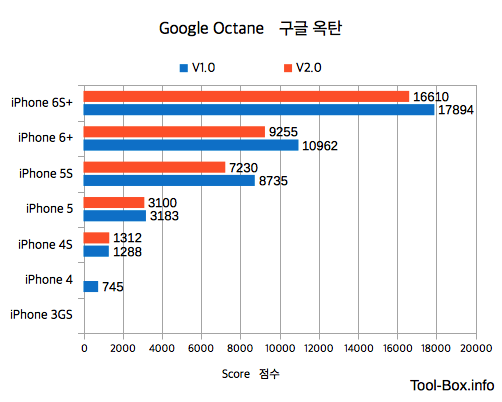Benchmarking the 7 generations of iPhones
Posted by Wesley onWhen you upgrade to the latest high-end device, you would expect it to perform faster than the last one. Thanks to the ever-progressing technology this has always been the case with the flagship iPhones, but the performance jump was not always consistent. Let's see how the seven generations of the iPhones stack up.
One thing to note is that I'm probably not missing much by not having the original iPhone or iPhone 3G here. Many of the tests are already flaky with iPhone 3GS or 4, largely due to not getting a newer OS. 3GS at least is barely holding on with an OS that got its last security patch in February 2014. iPhone 3G is considerably worse, with its last update in November 2010, nearly five years ago.
First up is the GeekBench 3, as shown in the video. 3GS was able to run the 3.1.1 version of the benchmark on iOS 6.1.6, while the 4 ran the 3.2.0 version on iOS 7.1.2. All the others were running the latest version at the time of the writing, 3.4.0, which supports iOS 9.0.2 installed on the devices.

GeekBench 3 results
Links to Results
[iPhone 3GS iPhone 4 iPhone 4S iPhone 5 iPhone 5S iPhone 6+ iPhone 6S+]
The results provide some interesting observations. There are two instances where the performance upgrade wasn't quite as significant as the other times: 3GS to 4, and 5S to 6 Plus. These were the times when the screen resolutions saw a significant jump from the predecessor - 360x480 to 640x960 and 640x1136 to 1242x2208 (downscaled to 1080x1920 on the display), respectively, which is about 4 times the pixel count. Much of the enhancements seemed to have sunk into supporting the higher display resolution.
In the other times, the performance increases approximately twofold each generation. At the transition from 4 to 4S, this was achieved purely by going dual-core. Since then the per-core performance was boosted. In the end, you can see an 11-fold improvement for going from the first dual-core iPhone (4S) to the latest (6S Plus).

3DMark for iOS 1.3.0 results
Graphics performance was measured with 3DMark for iOS, which needed iOS 7 to run. This was why 3GS was unable to participate, but given the dismal result from the 4 it's not much of a loss.
Improvements in this category is much more pronounced. Going from 4 to 4S presented a whopping five-fold jump, and the two subsequent generations each saw about 2.6x the boost as well. Even if you compare between the 4S and the 6S Plus, the improvements are in the order of 12.7 times, more than what you saw with the processor speed.

SunSpider 1.0.2 results
Links to Results
[iPhone 3GS iPhone 4 iPhone 4S iPhone 5 iPhone 5S iPhone 6+ iPhone 6S+]
Now let's take a look at the JavaScript benchmarks running in the default Safari web browser. As a lot of mobile sites and hybrid apps use JavaScript to help render the screen you browse, a device with a higher score would feel faster under the same internet connection.
The SunSpider benchmark is relatively lightweight and easily runs even on an iPhone 3GS. Looking at the results, the amount of performance improvements for each generation roughly mirrors the processor advancements.

Google Octane V1 and V2 results
And these are the results from Google's Octane benchmarks. The version 2 is incompatible with iOS 7 and earlier, so I added the version 1 to make it more complete. Unfortunately, 3GS crashed even with version 1, likely due to having a small RAM capacity (256MB).
Still, the story is pretty much the same. Performance consistently improved in large steps between iPhone 4 and 5S, only to be stalled a bit with 6 Plus, then resuming with 6S Plus. If you were holding onto a 5S in anticipation for a big performance upgrade, your wait is over with 6S and 6S Plus. They should give you roughly twice the speed.
Defined tags for this entry: 3DMark, Geekbench, iPhone 3GS, iPhone 4, iPhone 4S, iPhone 5, iPhone 5S, iPhone 6 Plus, iPhone 6S Plus, Octane, SunSpider